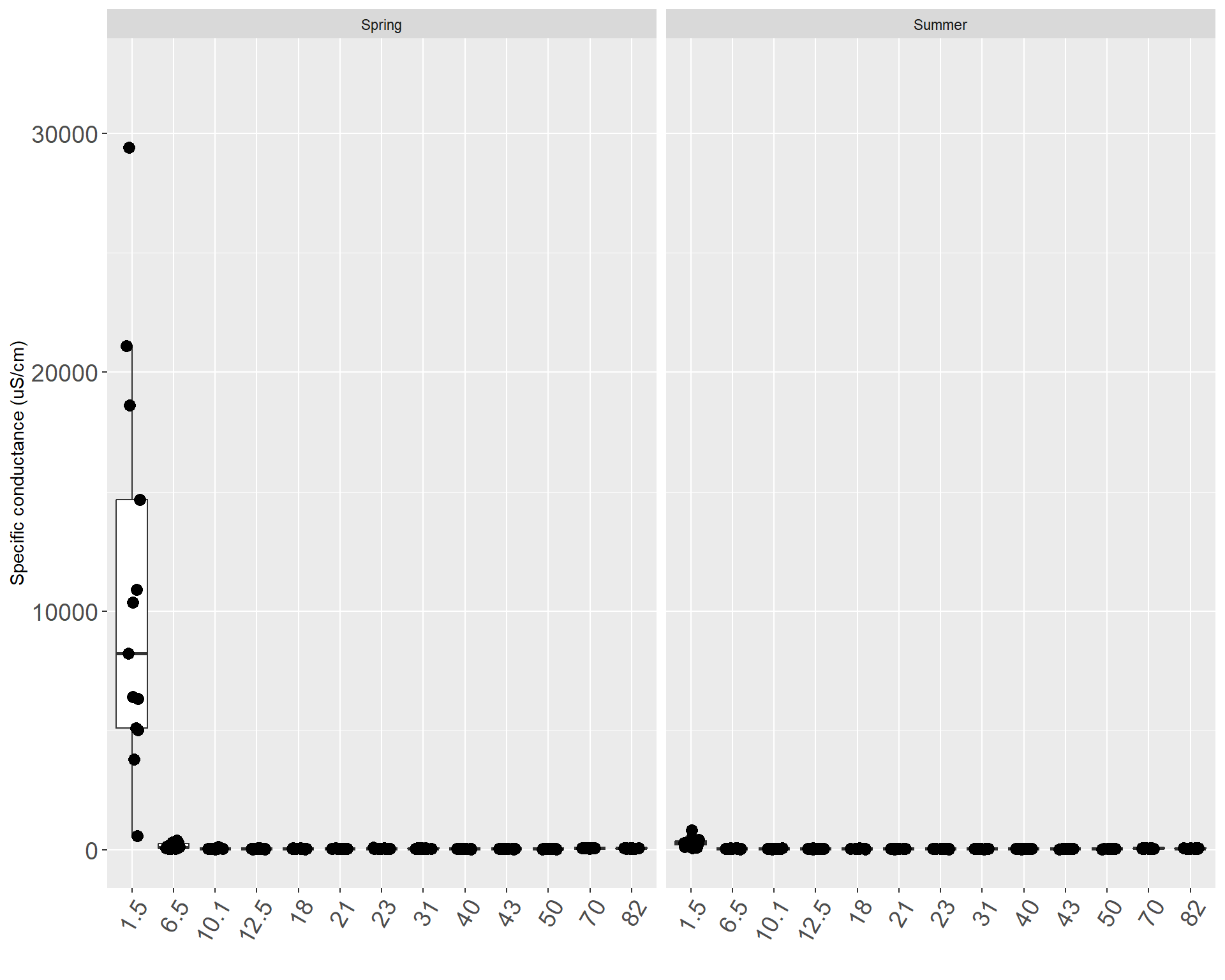

The capacity of water to conduct electricity is measured by specific conductance, and the level of specific conductance also correlates with the concentration of calcium, dissolved solids, and the water’s hardness (Glass, 1999). There is not currently an ADEC or USEPA standard for specific conductance for aquatic life in freshwater.
The highest level of specific conductance in the mainstem was 29398 µS/cm, which was sampled at Mile 1.5 in spring 2011, and the lowest level was 37.7 µS/cm at Mile 50 in spring 2004 (Table X). Mile 1.5 had the greatest variance and the highest median in both the spring and the summer, followed by Mile 6.5 in the spring and Mile 70 in the summer. From Mile 10.1 to Mile 50, the specific conductivity medians only varied within a span of 15 µS/cm in both spring and summer, with the lowest median at Mile 43. Above Skilak Lake at Mile 70 and Mile 80, specific conductivity was higher relative to the rest of the mainstem, excluding the estuary. Specific conductivity was higher in the spring than in the summer throughout the mainstem, except at Mile 50 where specific conductance was higher during the summer (Figures X & X).
In the tributaries, specific conductance ranged from a high of 1088 µS/cm in No Name Creek during spring 2010 to the lowest level of 18 µS/cm in the Killey River during summer 2004 (Table X). The Killey River maintained the lowest median during the spring and the summer, while the highest median was in No Name Creek for both the spring and Soldotna Creek for the summer. The tributaries had higher levels of specific conductance in the summert, except for the Killey River, Russian River and Juneau Creek. In the summer, the tributaries generally had higher medians than the mainstem, but a corresponding trend was not apparent in the spring data (Figures X & X).